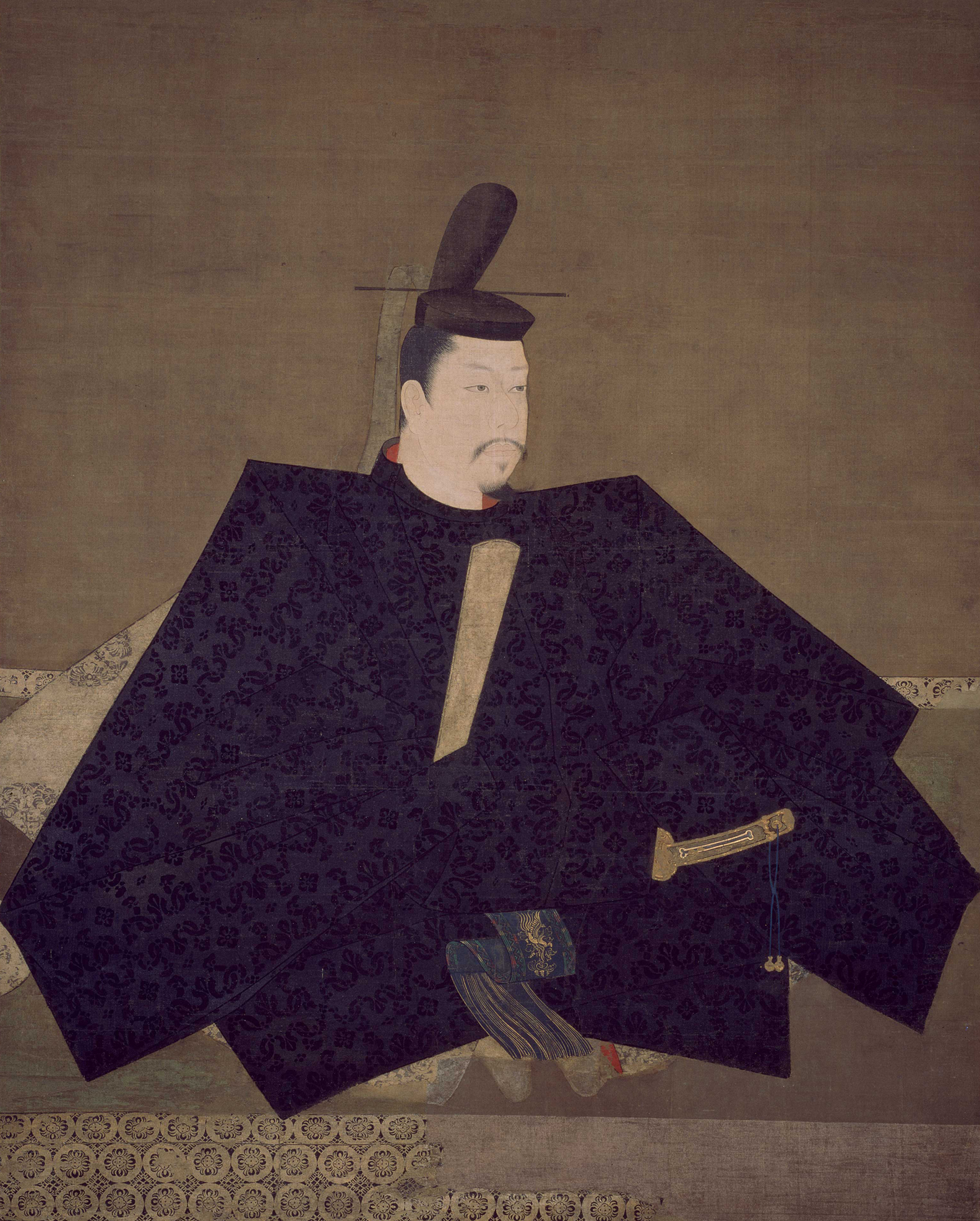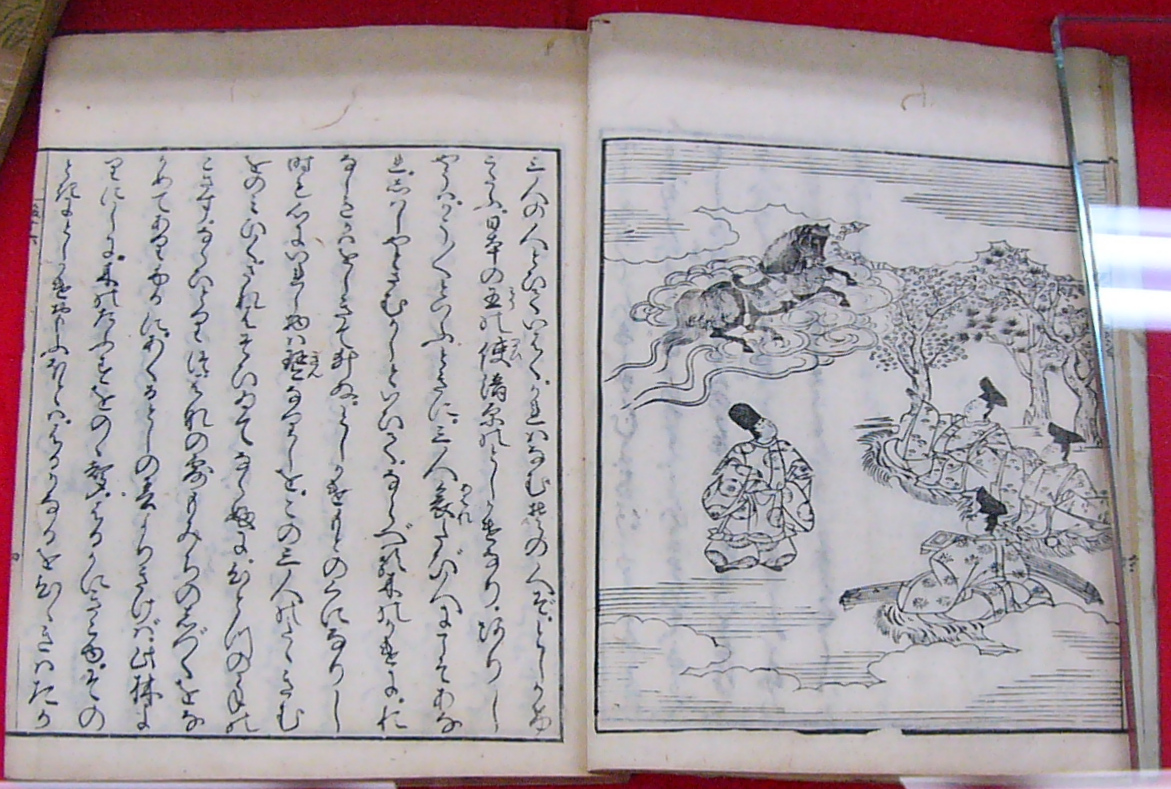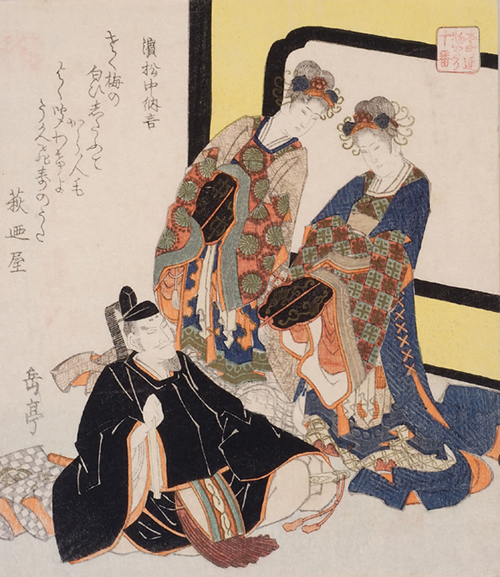|
Monogatari
is a Literary genre, literary form in traditional Japanese literature – an extended prose narrative tale comparable to epic (genre), epic literature. ''Monogatari'' is closely tied to aspects of the oral tradition, and almost always relates a fictional or fictionalized story, even when retelling a historical event. Many of the great works of Japanese fiction, such as the ''Genji Monogatari'' and the ''Heike Monogatari'', are in the ''monogatari'' form. History The form was prominent around the 9th to 15th centuries, reaching a peak between the 10th and 13th centuries. ''Monogatari'' was the court literature during the Heian era and also persisted in the form of archaic fiction until the sixteenth century. The ''Fūyō Wakashū'' (1271) indicates that at least 198 ''monogatari'' existed by the 13th century. Today, only 24 exist. Genres The genre is subdivided into multiple categories depending on their contents: ''Denki-monogatari'' Stories dealing with fantastical events ... [...More Info...] [...Related Items...] OR: [Wikipedia] [Google] [Baidu] |
Medieval Japanese Literature
Japan's medieval period (the Kamakura period, Kamakura, Nanbokuchō period, Nanbokuchō and Muromachi period, Muromachi periods, and sometimes the Azuchi–Momoyama period) was a transitional period for the nation's literature. Kyoto ceased being the sole literary centre as important writers and readerships appeared throughout the country, and a wider variety of genres and literary forms developed accordingly, such as the ''gunki monogatari'' and ''otogi-zōshi'' prose narratives, and ''renga'' linked verse, as well as various theatrical forms such as ''noh''. Medieval Japanese literature can be broadly divided into two periods: the early and late , the former lasting roughly 150 years from the late 12th to the mid-14th century, and the latter until the end of the 16th century. The early saw a continuation of the Heian literature, literary trends of the classical period, with court fiction (''monogatari'') continuing to be written, and composition of ''waka (poetry), waka'' poet ... [...More Info...] [...Related Items...] OR: [Wikipedia] [Google] [Baidu] |
Torikaebaya Monogatari
, translated into English as ''The Changelings'', is a Japanese tale from the late Heian period (794 to 1185) by an unknown author, or possibly more than one author. It is four volumes in length.Kubota (2007:255) It is the tale of two siblings whose mannerisms are those of the opposite sex, and their relationships in the Emperor's court. It has been adapted as a novel, two different manga series, and a Takarazuka Revue play. It was translated into English in 1983. The reception of the tale over time has depended on how the society sees sex and gender issues, with one reading of it being as a ribald erotic comedy, while another reading is as a serious attempt to discuss sex and gender issues through a Heian Buddhist understanding. Story The story tells of a Sadaijin (high-ranking courtier) who has two similar-looking children by different mothers, but their mannerisms are those of the opposite sex. The title, "Torikaebaya", literally means "If only I could exchange them!", a ... [...More Info...] [...Related Items...] OR: [Wikipedia] [Google] [Baidu] |
Genji Monogatari
is a classic work of Japanese literature written by the noblewoman, poet, and lady-in-waiting Murasaki Shikibu around the peak of the Heian period, in the early 11th century. It is one of history's first novels, the first by a woman to have won global recognition, and in Japan today has a stature like that of Shakespeare in England. The work is a depiction of the lifestyles of high courtiers during the Heian period. It is written mostly in Japanese phonetic script (''hiragana''), in a vernacular style associated with women's writing of the time (not the same as "vernacular Japanese", which only appeared in late 19th century), not in Chinese characters (''kanji'') used for more prestigious literature, and its archaic language and poetic style require specialised study. The original manuscript no longer exists but there are more than 300 later manuscript copies of varying reliability. It was made in " concertina" or style: several sheets of paper pasted together and folded alter ... [...More Info...] [...Related Items...] OR: [Wikipedia] [Google] [Baidu] |
The Tale Of The Bamboo Cutter
is a (fictional prose narrative) containing elements of Japanese folklore. Written by an unknown author in the late 9th or early 10th century during the Heian period, it is considered the oldest surviving work in the form. The story details the life of Kaguya-hime, a princess from the Moon who is discovered as a baby inside the stalk of a glowing bamboo plant. After she grows, her beauty attracts five suitors seeking her hand in marriage, whom she turns away by challenging them each with an impossible task; she later attracts the affection of the Emperor of Japan. At the tale's end, Kaguya-hime reveals her celestial origins and returns to the Moon. The story is also known as , after its protagonist.Katagiri et al. 1994: 81. Background ''The Tale of the Bamboo Cutter'' is considered the oldest surviving , though its exact date of composition is unknown.Katagiri et al. 1994: 95. The oldest surviving manuscript is dated to 1592. A poem in the , a 10th-century work that describ ... [...More Info...] [...Related Items...] OR: [Wikipedia] [Google] [Baidu] |
Utsubo Monogatari
is a late 10th century Japanese story. It is Japan's oldest full-length narrative.Kubota (2007:34)Nihon Koten Bungaku Daijiten Henshū Iinkai (1986:170-173) Twenty volumes exist that are dominated by two plotlines: about a family of master virtuosos who have learnt the art of playing the koto from celestial beings and acquired it as a hereditary gift from a Buddha and the story of a rich court nobleman named Minamoto no Masayori from the Fujiwara family and his ninth daughter Atemiya, who is the subject of courtship by many nobles, Atemiya becomes the wife of the emperor and her son his successor. Composition The author is unknown. Minamoto no Shitagō is cited as a likely candidate; however, it may have had multiple authors spanning a number of years. The text is referenced in a number of later works such as (), (1002), and (), suggesting compilation between . The text is illustrated in an by Asukabe no Tsunenori, with calligraphy by Ono no Michikaze. References to ... [...More Info...] [...Related Items...] OR: [Wikipedia] [Google] [Baidu] |
Hamamatsu Chūnagon Monogatari
, also known as , is an eleventh-century Japanese ''monogatari'' that tells about a ''chūnagon'' who discovers that his father has been reborn as a Chinese prince. He visits his reincarnated father in China and falls in love with the Hoyang Consort, consort of the Chinese Emperor and mother of his reborn father. The book originally comprised six chapters, but the first chapter has been lost. The tale was written by a female author who employed several exotic locations in the work. The author considers the love between a parent and a child to be "deeper, lasting and more tender" than romantic love between a man and a woman, which follows traditional virtues of filial piety. Plot ''Hamamatsu Chūnagon Monogatari'' is the tale of a ''chūnagon'' who lost his father when he was very young. His mother marries a widower with two daughters and he fell in love with the older daughter, Taishō no Kimi. The Chūnagon learns in a dream that his father has been reborn as the Third Prince of ... [...More Info...] [...Related Items...] OR: [Wikipedia] [Google] [Baidu] |
Yamato Monogatari
is a collection of 173 short stories which give details about life in the imperial court in the 9th and 10th centuries. Nussbaum, Louis-Frédéric. (2005)"''Yamato monogatari''"in ''Japan Encyclopedia'', p. 1047. It is an '' uta monogatari'' (a work combining narrative fiction with '' waka'' poetry) from the 10th-century Japan. The exact date of the completion of the text is unknown, but the majority of the text was completed in the year 951 by an unknown author. Content The ''Ise Monogatari'' had a strong influence on the composition of ''Yamato Monogatari'', one that can be seen in the fact that some of the same tales appear in both works. The appearance of many historical figures and the absence of a single main character are characteristics of this text. Origin The poems in ''Yamato Monogatari'' were written in a time when Japanese literature and art was flourishing, after having stopped communications with China. Deciding that the declining Tang dynasty was no longer wor ... [...More Info...] [...Related Items...] OR: [Wikipedia] [Google] [Baidu] |
Heike Monogatari
is an epic account compiled prior to 1330 of the struggle between the Taira clan and Minamoto clan for control of Japan at the end of the 12th century in the Genpei War (1180–1185). It has been translated into English at least five times. The first translation was by Arthur Lindsay Sadler, in 1918–1921. A complete translation in nearly 800 pages by Hiroshi Kitagawa & Bruce T. Tsuchida was published in 1975. It was also translated by Helen McCullough in 1988. An abridged translation by Burton Watson was published in 2006. In 2012, Royall Tyler completed his translation, which, he says, seeks to be mindful of the performance style for which the work was originally intended. Historical novelist Eiji Yoshikawa published a prose rendering in the '' Asahi Weekly'' in 1950, under the title ' (''Shin Heike Monogatari''). Background Title Heike () refers to the Taira (), ''hei'' being the ''on'yomi'' reading of the first ''kanji'' and "ke" () meaning "family". However, in t ... [...More Info...] [...Related Items...] OR: [Wikipedia] [Google] [Baidu] |
Tsutsumi Chūnagon Monogatari
is a post late-Heian period Japanese collection of short stories. Authorship With the exception of one story, the authorship is unknown. It is likely each story was written by different authors at various times and later collected together into a single text. ''Ōsaka Koenu Gonchūnagon'' is known to have been composed in 1055 by Lady Koshikibu. This is confirmed in volume 8 of which includes one of the poems from this story. In addition, poems from ''Hanazakura Oru Shōshō'', ''Hodohodo no Kesō'', ''Kaiawase'', and ''Haizumi'' are included in the 1271 '' Fūyō Wakashū'' indicating an upper bound for these stories. Tradition states that Fujiwara no Tameuji (1222–1286) and Fujiwara no Tamesuke (1263–1328) created copies of the manuscripts also indicating completion of the text by the 13th century. Contents The meaning of the title is unknown. There are two main theories: *It is a reflection of the various stories (''monogatari'') bound (''tsutsumi'') together into a ... [...More Info...] [...Related Items...] OR: [Wikipedia] [Google] [Baidu] |
Ochikubo Monogatari
, also known as ''The Tale of Ochikubo'', is a story from the Heian period which is similar to the famous fairy tale Cinderella. ''Ochikubo Monogatari'' was written during the later part of the 10th century by an unknown author. It is known as the oldest surviving tale in Japanese literature to include harassment and bullying from a stepmother. ''Ochikubo Monogatari'''s well-formed plot and vivid description of characters influenced many writers such as Murasaki Shikibu, author of ''The Tale of Genji is a classic work of Japanese literature written by the noblewoman, poet, and lady-in-waiting Murasaki Shikibu around the peak of the Heian period, in the early 11th century. It is one of history's first novels, the first by a woman to have wo ...''. The lively dialogues are also of particular quality. Overview The title "Ochikubo" comes from the name of the room in which the protagonist, a miserable lady, lives. The beautiful protagonist, Ochikubo Lady, is forced to live in ... [...More Info...] [...Related Items...] OR: [Wikipedia] [Google] [Baidu] |
Fūyō Wakashū
is a late 13th century collection of poetry from Japanese literature.Nihon Koten Bungaku Daijiten (1986:1545-1546)Kubota (2007:291) Composition The collection of poems was compiled in the year 1271. Although this is not completely certain, the author is believed to be Fujiwara no Tameie. According to the preface, the collection was commissioned by Emperor Go-Saga's consort, Ōmiya-in Kisshi. Contents The text was originally twenty volumes in length. However, only the first eighteen are currently extant. It contains 1418 poems collected from 198 various '' tsukuri-monogatari''. These are sorted into eleven categories, as detailed in the preface. Details of the author and context is given for each poem. The contents of the now missing 19th and 20th volumes are unknown. It contained one of the eleven categories. Value Many of the cited texts are either completely or partially no longer extant. Along with '' Mumyōzōshi'', ''Fūyō Wakashū'' is highly valued as a resource for ... [...More Info...] [...Related Items...] OR: [Wikipedia] [Google] [Baidu] |





